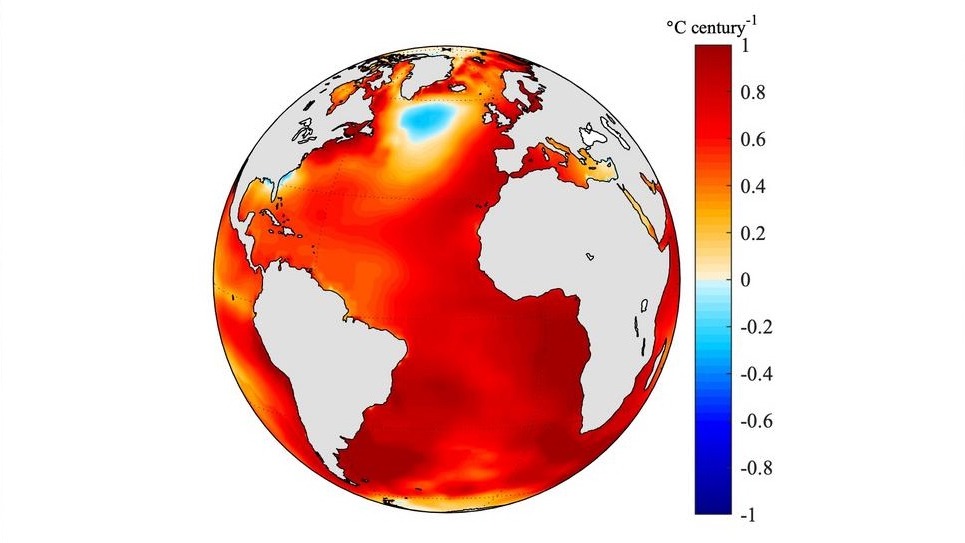Mystery behind cold blob in the Atlantic Ocean finally solved
Scientists have determined that slowing ocean currents are responsible for a cold spot south of Greenland.

Researchers have finally answered a longstanding question about a giant patch of cold water in the Atlantic Ocean, blaming a change in ocean currents for the unexpected cooling.
The anomaly, located just south of Greenland, is — perhaps counterintuitively — called the North Atlantic Warming Hole, and it has been stumping scientists for years. Despite the steady warming of ocean waters around the world, this one area got colder by up to 0.5 degrees Fahrenheit (0.3 degrees Celsius) over the past century.
By analyzing ocean temperatures and salinity patterns, scientists linked this mysterious cooling to the slowing of a system of ocean currents called the Atlantic Meridional Overturning Circulation (AMOC).
The changing AMOC is "a weakening of a major part of the climate system," David Thornalley, a paleoceanographer at University College London who was not involved in the new research, told Live Science in an email.
Finding the cause
The cold blob has long been a point of disagreement among oceanographers. Some believed that ocean dynamics were responsible, while others suggested atmospheric influences like aerosol pollution were the cause, according to a statement from the University of California, Riverside.
These findings, published May 28 in the journal Communications Earth and Environment, could help settle the disagreement, providing evidence that ocean dynamics are responsible.
Related story: Key Atlantic current is weakening much faster than scientists had predicted
Get the world’s most fascinating discoveries delivered straight to your inbox.
There are only about 20 years of direct AMOC observations, so the research team relied on other data to track older ocean movements. They used temperature and salinity data, which are correlated to current speed, to uncover the AMOC's patterns from the last century, and used 94 different ocean models to assess the changes.
With a clear timeline of the AMOC's behavior in hand, the researchers found that only the models that included slowed Atlantic currents matched the real-world cooling.
"It's a very robust correlation," study co-author Kai-Yuan Li, a climate scientist at the University of California, Riverside, said in the statement.
Broad implications
Better understanding of how the AMOC is slowing will not only explain the cold blob but will also contribute to climate forecasting, the statement noted. The AMOC and the anomaly it created both influence European weather patterns, including rainfall and wind.
Marine ecosystems may also be negatively affected by the changing currents, as water temperature and salinity can determine local habitability for some species.
There's also concern that the AMOC will collapse. Scientists believe that it will weaken by at least 20% by 2100, but it's unclear whether a collapse is imminent, said Nicholas Foukal, an oceanographer at the University of Georgia’s Skidaway Institute of Oceanography who was not involved in the new study.
"In some sense, the debate is over how bad the effects will be and whether we will have time to adapt to the changes, not whether it will happen," Foukal told Live Science in an email.

Perri Thaler is an intern at Live Science. Her beats include space, tech and the physical sciences, but she also enjoys digging into other topics, like renewable energy and climate change. Perri studied astronomy and economics at Cornell University before working in policy and tech at NASA, and then researching paleomagnetism at Harvard University. She's now working toward a master's degree in journalism at New York University and her work has appeared on ScienceLine, Space.com and Eos.
You must confirm your public display name before commenting
Please logout and then login again, you will then be prompted to enter your display name.
